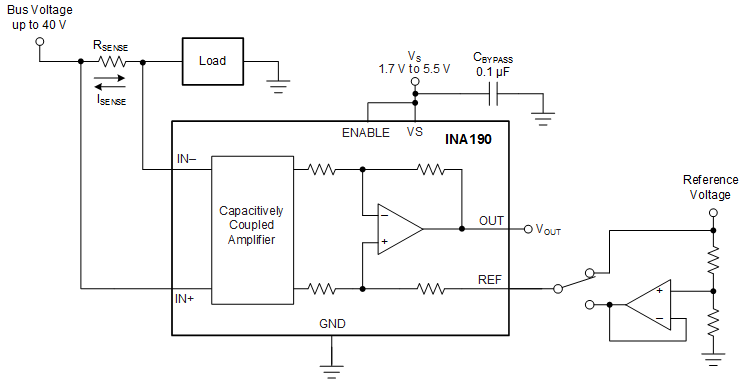ZHCSHW3D March 2018 – November 2019 INA190
PRODUCTION DATA.
- 1 特性
- 2 应用
- 3 说明
- 4 修订历史记录
- 5 Pin Configuration and Functions
- 6 Specifications
- 7 Detailed Description
- 8 Application and Implementation
- 9 Power Supply Recommendations
- 10Layout
- 11器件和文档支持
- 12机械、封装和可订购信息
封装选项
机械数据 (封装 | 引脚)
散热焊盘机械数据 (封装 | 引脚)
- DCK|6
订购信息
7.4.3 Bidirectional Mode
The INA190 devices are bidirectional current-sense amplifiers capable of measuring currents through a resistive shunt in two directions. This bidirectional monitoring is common in applications that include charging and discharging operations where the current flowing through the resistor can change directions.
 Figure 37. Bidirectional Application
Figure 37. Bidirectional Application The ability to measure this current flowing in both directions is achieved by applying a voltage to the REF pin, as shown in Figure 37. The voltage applied to REF (VREF) sets the output state that corresponds to the zero-input level state. The output then responds by increasing above VREF for positive differential signals (relative to the IN– pin) and responds by decreasing below VREF for negative differential signals. This reference voltage applied to the REF pin can be set anywhere between 0 V to VS. For bidirectional applications, VREF is typically set at VS/2 for equal signal range in both current directions. In some cases, VREF is set at a voltage other than VS/2; for example, when the bidirectional current and corresponding output signal do not need to be symmetrical.